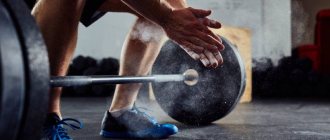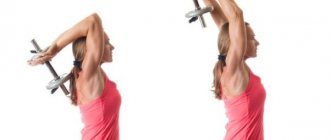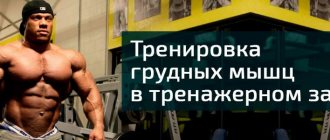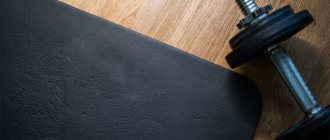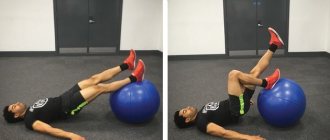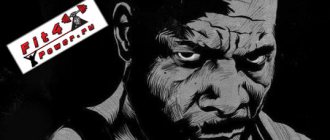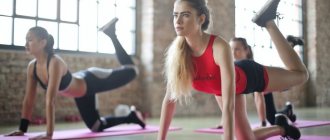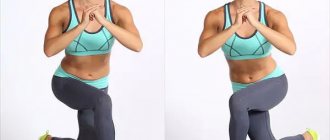A wide and developed back in bodybuilding gives the athlete’s figure an aesthetically attractive appearance. It doesn’t just make the athlete’s physique much more beautiful. If a bodybuilder has strong and strong back muscles, he has the opportunity for further progress. They are involved in almost every exercise. The more developed they are, the greater the potential of the bodybuilder.
Back training occupies a special place in the training process. It has its own characteristics. To become the owner of a truly powerful back, you need not only to properly build a training program, but also to know how to protect yourself from injury.
How to pump up your back muscles
The muscles that are located in the back are the largest group in the upper body. They handle heavy loads well and take on most of the hard work done during training. To pump up your back muscles, you need to avoid pumping or drop sets. The required load can be obtained only when basic exercises are performed using a large working weight.
The number of repetitions in each approach when performing basic movements to increase mass varies from four to six. This range makes it possible to work with heavy weights and feel that the back muscles are really fully loaded, since they will begin to ache after exercise. Simple exercises can be done with eight repetitions. The main thing is to constantly take on an impressive working weight.
A properly designed training program and working weights are important, but it brings practically no results when the execution technique is “lame”. The lack of a pronounced effect is not the only problem that the athlete will face. Improper technique greatly increases the likelihood of injury. If you do not hone the correct movements, the athlete will simply begin to lift weights, involving all muscle groups, which will lead to a lack of the necessary load, and there will be no progress for the back. Each last repetition should be given as hard as possible, but provided that the technique is perfect. If the weight does not move, you should quit, but do not neglect the correct execution.
To achieve the desired results, you need to stay true to your training principles. Loads should be progressive. It is necessary to increase the working weights, do one or two repetitions more than in the last lesson, and reduce the rest between individual approaches. The main thing is to constantly increase the load.
You can’t immediately take on excessively heavy weight that doesn’t work. It is necessary to progress, and not go ahead thoughtlessly, and then pay for carelessness with injury. This will lead to the fact that you will have to forget about training for a long time until the rehabilitation period has passed. Depending on the severity of the injury, recovery may take quite a long time. It is better to focus on increasing repetitions, since this approach is the least traumatic and allows you to increase efficiency.
Training notes
- The following workout programs do not include a warm-up. Do as many warm-up exercises as necessary, but do not warm up to the point of muscle failure.
- Choose a weight with which you will reach muscle failure for the number of repetitions indicated in the exercise.
- Keep yourself in shape and don't let your lower back rotate.
- Use a weight belt for deadlifts and deadlifts, and bands to strengthen your grip.
Below we show methods not only of how to pump up a man’s back; sets of exercises are designed to increase the width of the back muscles, their mass and volume, improve the relief and even strengthen the lower back.
Anatomy of the back muscles
The anatomical structure of the back consists of muscles grouped in pairs, entwining the back of the body. They are divided into two large groups:
- External. Formed by the latissimus, serratus, trapezius and extensor muscles. They form the surface of the back and therefore require increased attention.
- Internal. They are located deep under the external ones and are a combination of the diamond-shaped, large round, adductor blades and others. If these muscles are given due attention and developed, they begin to push out the external ones, giving the back a deep and powerful relief.
Pumping up the back muscles, first of all, involves working on the latissimus. This is due to the size, since they are the largest and give the silhouette the coveted V-shape. When creating a training program, the main emphasis is on exercises that develop them.
To pump up the latissimus muscles to the maximum, you need to have a clear understanding of what functions they perform for the human body. They are involved when the upper limbs lead to the body from above and below, from the side and from the front, that is, when performing pull-downs. These exercises should be the main basis for training the latissimus muscles.
The most effective exercises for back training, during which the athlete is able to perform natural and maximally functional movements, are pull-ups. You should give up light block pulls and focus on heavy variations.
The volume of the upper part of the body is given by the trapezoidal shape, which is located in the middle. The trapezius is attached to the neck and shoulder joints. These points of contact create bumps on the neck. The function of this muscle is that it brings each other together and lifts the shoulder blades down and up. A similar movement occurs indirectly in almost all exercises that are done for the back. Inclined and straight shrugs are best suited for developing the trapezius.
Extensors are long, oblong muscles that stretch along the entire spine. Their function is quite simple. They are responsible for bending and extending the body back and forth. The extensors should not be neglected. When they are developed, the back becomes stable when performing exercises, which provides progress for the entire training process.
The best exercise that allows you to pump up your extensors most effectively is the deadlift. It really is the best for working absolutely all muscles, not just the back. When performing this exercise, your arms and legs are also pumped up, but the most important thing is that the ligamentous apparatus is strengthened, and the depth and thickness of the back is increased.
This result is achieved because the heaviest weights are involved in the deadlift. This also has its downsides. With this exercise it is impossible to increase the width of the back. It doesn't get any more powerful on the sides.
We must not forget about the serratus muscles. They articulate with the oblique abdominal muscles. There is a small layer of subcutaneous fat here. Due to this, when the serratus muscles are developed, they add even more attractiveness to an athletically built athlete.
The most effective exercises for this group are diagonal crunches performed on the abs, as well as various pullovers. There is no need to pay special attention exclusively to these muscles. They are growing and catching up along with the others.
Let's rock your back according to science! Training in detail
Deadlift
This is a basic multi-joint exercise for the back muscles in the gym, in which almost all the major muscle groups of the body are additionally loaded.
- Place your feet shoulder-width apart or slightly narrower, parallel, or turn your toes slightly outward. The pose is selected individually, based on the ease of performing the exercise and the requirements for maximum stability. Sit down and grab the barbell with an overhand grip, hands shoulder-width apart. The body is tilted forward, the back is straight and straightened at the waist, the chest is straightened.
- At the beginning of the movement, the back is motionless, the weight is taken due to the tension of the leg muscles. Fully straighten your body, with your knees straightening last.
- Lower the bar along the same path.
Special instructions:
- The bar of the bar should slide along the shins, the bar should not go around the knees, and the arms should hang down freely. The bar moves strictly in a vertical plane. If your knees are getting in the way, you need to increase the forward angle. But the distance between the shins and the bar should be no more than 2-3 cm.
- The back always remains straight; bending when bending forward occurs not in the lower back, but in the hip joints.
Exercises for back muscles
You should not focus solely on which exercises are the best and most effective for pumping up the muscle groups of the back. It is recommended to pay equal attention to the expected results.
Some athletes want to have a deep and strong back, while others, on the contrary, want a powerful upper body and a narrow waist. When priority goals and objectives are identified, exercises begin to be selected that will allow you to achieve what you want.
The level of training and experience of the athlete is no less important. Beginning athletes need to first pump the latissimus dorsi muscles, and then train the trapezius and extensors. Absolutely any type of vertical rods allows you to increase the width.
So, if we group exercises according to effectiveness for certain muscles, then:
- The best for the widest are pull-ups and types of rows such as overhead and horizontal pulleys, bent-over barbells and dumbbells, as well as T-bar;
- Shrugs with both barbells and dumbbells are considered most effective for trapezius muscles;
- The best for extensors is the deadlift, which is more effective than hyperextension, bending, performed with a barbell next to or on the shoulders.
The fundamental point that is crucial when performing these exercises is that the back should always remain straight, but it is best to keep the lower back slightly arched. This position, when the pelvis is abducted and the chest is pushed forward, ensures safety for the lumbar region, and also allows for more correct and complete contraction of the muscle groups of the back.
Any exercise to work your back can pump up your biceps. If you train incorrectly, the main load falls on it. The downside is that the biceps are small. And if a big back doesn't get tired for a long time, he gets tired very quickly. When the main emphasis, if the technique is not followed, is on the biceps, it begins to slow down progress due to fatigue.
In order not to slow down development, the main emphasis is on the technique of performing the exercise, which allows you to develop the target muscles to the maximum, but does not affect the biceps. Such a goal can be achieved only consciously, when the reduction process is completely controlled. It is necessary to constantly feel the muscle-brain connection.
When the technique does not work, the next morning your biceps begin to hurt, and, therefore, you need to continue to work on yourself. It is recommended to improve absolutely everything, working on absolutely every little detail. The technique involves bringing movements and contractions to automaticity.
It is always necessary to learn each exercise first without using weights. You can use any available tool that allows you to create an imitation of dumbbells or barbells. Movements are performed as slowly as possible with full amplitude. This allows you to achieve real results, since it strengthens and improves the connection between nerves and muscles.
Pull-ups
This exercise is an excellent workout for the latissimus muscles, allowing you to pump up both depth and width. The technique for performing pull-ups is as follows:
- to engage the biceps and involve the latissimus muscles, use a fairly wide grip;
- you need to grasp the crossbar from above with all five fingers;
- you need to pull yourself up towards the chest, as this loads the triangle of the spinal muscles.
When performing pull-ups, you should not concentrate on your arms. The main thing is that your elbows are behind your body.
Vertical block thrust
The exercise in question is a lightweight variation. It is especially suitable for beginner athletes. In this deadlift, you can use weight that is less than your own. Performing this deadlift allows you to learn how to contract exactly those muscles that allow you to get the desired result for the future. The lightweight version can be excluded from your training when the athlete is able to perform at least five pull-ups with the correct technique.
Doing vertical block rows is useful even for professional and experienced athletes. If the exercise is included in a super series or drop sets, this will increase the intensity of the training. This exercise works the individual muscle segments quite deeply, and it also allows you to deviate the body much more than in pull-ups, and, therefore, it is good to pump the lats much higher.
The main points that need to be taken into account are quite simple, but often remain without due attention:
- the cable of the projectile at each point of the amplitude must always move only vertically;
- the cable entry should be at the lower point of the chest, and then descend down the spine;
- the cable and elbows must move down in the same plane. The elbows should not be allowed to move forward or backward, since their insertion behind the body should be carried out due to the deflection in the chest area.
For a beginner who has mastered all these points, it is easy to move on to more complex options.
Bent-over barbell row
Its implementation requires close attention to the grip, that is, the width, as well as the orientation - forward or reverse. It is necessary to monitor the body. The closer it tilts to the horizontal, the better the back begins to work, but the negative impact of loads on the lumbar region increases. Another important point is the trajectory with which the bar moves. It should stretch along the lower limbs and elbows, which extend behind the body.
T-bar row
If you correctly master the technique of execution, the exercise becomes much more effective for working out the back than deadlifts, which are performed in an inclined position. The mechanics of these movements are similar to those before, but the use of the T bar allows you to remove the load from many stabilizer muscles, and, consequently, increase working weights.
The only point that needs to be taken into account when performing such a deadlift is that this exercise should not be performed on an inclined or horizontal bench. They significantly reduce the range of motion and also complicate the contraction of the muscle groups of the back, since this does not allow arching. This exercise should only be done while standing.
Bent-over one-arm dumbbell row
The unilateral exercise does not have a complicated technique. It is much easier and simpler to do. The range of movement is increased due to the absence of a barbell, that is, a barbell in the middle of the body. This allows you to bring the projectile much further at the top point behind the body and stretch the lats to the maximum in the bottom position.
Horizontal block thrust
This exercise engages the middle and lower back as the cable is pulled down the abdomen. A different effect can be obtained with a wide handle and pulling the block towards the chest, which provides an incentive for the development of the upper part.
The following points need to be taken into account:
- the length of reach of the cable should be optimal, since if you sit too far, it will become difficult to keep your back straight;
- reaching the lower extreme point, it is necessary to stretch the muscles, moving the body forward;
- You cannot tilt your body back at the top point; your back at this moment should be perpendicular to the floor surface.
Shrugs
The shoulder shrug is an exercise that forces the shoulder blades to move. This involves the trapezius muscles, since they are responsible for this function. Thanks to shrugs, the volume of the trapezoid increases significantly. The exercise can work the trapezius in a variety of ways. You can begin to raise your shoulder blades while pulling weights or in a tilted position, when they move freely towards each other, that is, they are brought together.
Shrugs are done with a barbell or dumbbells. The first apparatus is much more convenient for those who want to progress in weight. The advantage of dumbbells is that they are most conveniently held at the sides. As an alternative, you can use a machine that simulates dumbbells with weights made from pancakes.
Shrugs may seem simple, but they are designed for experienced athletes. For beginners, it is enough to do pull-ups, deadlifts, and horizontal rows, which also work the trapezius well.
You cannot rotate your shoulders while doing shrugs. This additional load does not increase efficiency, but it does increase the chances of injury. This movement is unusual for the trapezius, which is further exacerbated when heavy weights are used.
Deadlift
This is a rather difficult and exhausting exercise, since the load falls on almost all parts of the body. When loading the back, both internal and latissimus muscle groups, trapezius, and extensors are simultaneously involved.
When a broad back is a priority for an athlete, deadlifts are performed after exercises that work the lats. Otherwise, all your strength will be completely taken away. Athletes for whom the primary goal is to pump up the extensors and increase the thickness of the back, and who want to lift as much weight as possible, should do this exercise first.
Back muscle training. Denis Gusev.
Hyperextension
Hyperextension translated from English means hyperextension, hyperextension. The exercise is designed to strengthen the muscles of the lumbar region. The main load falls on the back extensors, hamstrings and gluteal muscles. The work involves small back muscles that are not worked by any other exercises. Strong lower back muscles are very helpful in speeding up progress in basic exercises like deadlifts and others and building up your back faster in the gym.
- The front rollers of the machine should be at the level of the top of the hips (flexion point), the bottom rollers should be slightly above the ankles. You need to lie down on the machine and place your feet under the lower rollers, cross your arms over your chest or connect them behind your head. Legs and back form one straight line.
- Lean forward to an angle of 60 degrees, slightly rounding your back, hold for 1 second.
- Smoothly return the body to its previous position.
Special instructions:
- You don't need to go too low, to a 90-degree angle between your body and legs.
- At the top point you should not bend back, this is harmful to the spine.
Back training program
It should be built according to the following principles:
- include horizontal and vertical thrusts;
- performed in 4-6 repetitions;
- pump up your back through basic exercises with heavy weights.
Another important point is the preparation of the athlete.
For newbies
The program includes:
- Warm up 5-10 min
- Pull-ups 4x6
- Deadlift 4x6
- Bent-over barbell row 4×6
- Cool down (muscle stretching)
Those athletes who cannot do five pull-ups with perfect technique should do vertical pull-downs. The main thing is not to mess around. The execution must be perfect and the working scales must be heavy.
For intermediate level
It differs from the program for beginners by the introduction of another exercise that develops the latissimus muscles - one-arm dumbbell rows. It is done in 3 sets with 8 repetitions in each.
Athletes who have a good mass, for deep development, can resort to another version of the program, consisting of:
- Warm up 5-10 min
- Pull-ups 4x6
- Deadlift 4x6
- Bent-over barbell row 4×6
- One-arm dumbbell row 3×8
- Cool down (muscle stretching)
Or this (for athletes with available muscle mass for deep development):
- Warm up 5-10 min
- Vertical block pull 4×6
- Row T bar 4×6
- Horizontal block pull 4×6
- Shrugs with dumbbells 3x8
- Cool down (muscle stretching)
Each athlete chooses the best workout for himself, taking into account his primary goal.
For experienced athletes
The program may include:
- Warm up 5-10 min
- Pull-ups 4x6
- Bent-over barbell row 4×6
- One-arm dumbbell row 3×8
- Horizontal block pull 4×6
- Shrugs or deadlifts (optional)
- Cool down (muscle stretching)
The advanced training program includes one exercise for the trapezius and four for the latissimus muscles. The main idea is that the intensity of your training increases. You can increase the number of exercises, reduce rest after approaches, use super series or drop sets.
Reverse swing with reclining bench
To best perform this type of workout, you will need a bench and two dumbbells or weights (it is advisable to use different sizes of tools, starting with light ones and then gradually increasing the level of resistance).
- Starting position: Lie on an adjustable incline bench at an angle of 30° to 45°, holding a dumbbell in each hand. Back straight, shoulders back.
- Execution: Inhale and extend both arms at the same time until you reach shoulder level, avoiding bending at the elbows. Tighten your back muscles, exhale and slowly return the dumbbells to the starting position.
- How many times to repeat: Also in this case, the number of reverse flies performed depends on the state of the form, but to get results it is recommended to perform a series of 12-15 repetitions.
Rowing machine pulley
There are also two types of rowing machines that allow you to do cable exercises. The most famous and used is the "low pulley" and the less practical but no less useful "high pulley".
The difference between the two exercises lies in the angle of the torso, the position of the feet and the depth (low or high) of the tool that we are going to use.
There are many variations of this exercise, but here we will focus on the traditional V-handle rowing machine pulley. This is a great back workout for men, especially those who have sedentary jobs.
Degree of difficulty: medium.
- Starting position: Sitting with a straight back, slightly bent at the knees, feet resting on the footrests, holding the low cable with both hands.
- Execution: Inhale and pull the handle towards your stomach, contracting your back muscles. Stretch your back, pushing your torso forward, exhale and return to the starting position.
- How many times to repeat: Here again, the number of blocks to perform depends on the state of the form, but to get results it is recommended to perform at least a series of 12 repetitions.
The importance of warming up and cooling down
In ideal health, the back muscles quickly return to a working rhythm after warming up and begin to accept the workload without any problems.
After completing the entire set of exercises to strengthen the back muscles, you should not leave the gym without doing simple stretching exercises on the machines or on the mat to bring the muscles into a state of stability and rest. This is the so-called hitch. Only after this can you take a shower and go home.
Wide grip pull-ups
The pull-up is a basic movement used to train the latissimus dorsi and biceps muscles. The grip you choose depends on which muscles are most loaded: if you use a straight wide grip, then the lats will do the main work; If you do pull-ups with a narrow reverse grip, then the biceps will bear most of the load. Since our article is devoted to training the back muscles, we will consider the first option.
Technique:
- Grab the bar with an overhand grip, with your hands slightly wider than shoulder-width apart. Hang from the horizontal bar.
- As you exhale, pull yourself up. In the top position, the chin should be above the level of the bar. While in this position, pause for a second.
- While inhaling, slowly lower yourself to the starting position.
Recommendations:
- Don't fall sharply down, go down slowly and under control.
- Don't try to put your chin on the horizontal bar. The ideal repetition is when your upper chest touches the bar.
- At the bottom point, fully straighten your arms.

